Best Baby Books: Why It’s Never too Early to Build Your Child’s Library
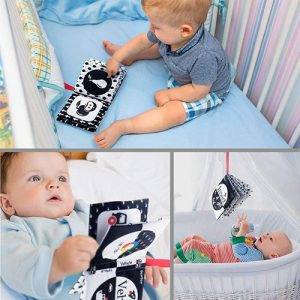
Even though a baby may not yet have an extensive vocabulary (or any vocabulary), that doesn’t mean their exposure to new words, story lines, and physical books is a waste. In fact, children that are regularly read to have a tendency to develop language and comprehension more easily as they grow.
If you are looking to build your child’s library, or want to gift books for a baby shower, birthday, or just because, you might want to take a look at the options we’ve provided below. These are age appropriate and stimulating to various stages of development to grab a child’s interest. Afterall, learning to love books has no age limit!
| Rank | Product | Highlights |
| #1 | 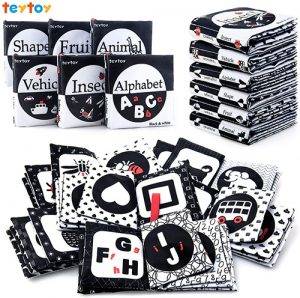 teytoy My First Soft Book teytoy My First Soft Book
|
|
| #2 | 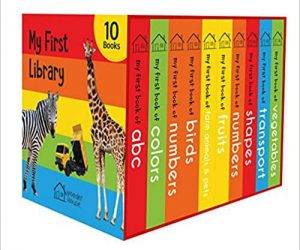 My First Library : Box Set of 10 Board Books My First Library : Box Set of 10 Board Books
|
|
| #3 | 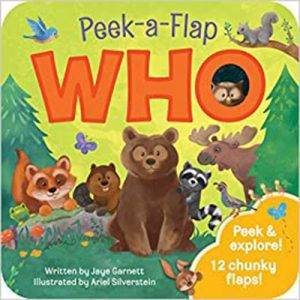 Who: Peek-a-Flap Board Book Who: Peek-a-Flap Board Book
|
|
| #4 | 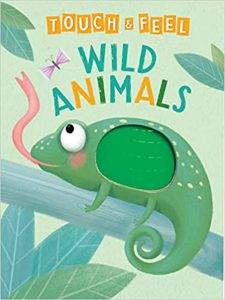 Wild Animals: A Touch and Feel Book Wild Animals: A Touch and Feel Book
|
|
| #5 | 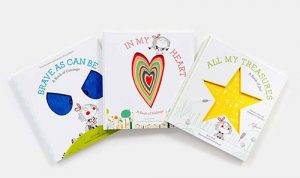 In My Heart: A Book of Feelings In My Heart: A Book of Feelings
|
|
| #6 | 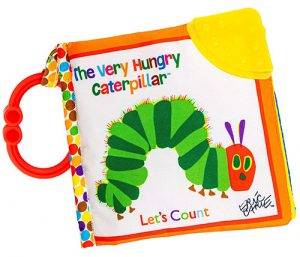 World of Eric Carle The Very Hungry Caterpillar Baby Teething Crinkle Book World of Eric Carle The Very Hungry Caterpillar Baby Teething Crinkle Book
|
|
Table Of Contents
- Why Read to a Baby?
- Benefits of Reading to Baby
- Reading Stages of Development
- Our Top Baby Book Picks for Early Library Growth
- 1. teytoy My First Soft Book
- 2. My First Library : Box Set of 10 Board Books
- 3. Who: Peek-a-Flap Board Book
- 4. Wild Animals: A Touch and Feel Book
- 5. In My Heart: A Book of Feelings
- 6. World of Eric Carle The Very Hungry Caterpillar Baby Teething Crinkle Book
- Conclusion
Why Read to a Baby?
There is no need to be embarrassed to be reading to an infant who is more concerned with shoving their tiny fingers in their mouths and falling asleep. In fact, the soothing sound of your voice as you read, rising and falling in cadence with various words and sentence structure, helps develop the roots of language in a baby’s brain. Plus, the more words your child is exposed to as an infant carries forward with them as they grow and learn to use them correctly.
Another reason why you should read early and often is to create a pattern of behavior for both you AND the child. Parents who read regularly are more likely to continue to read to their child through various stages of development. Plus, this time becomes a bonding time between a parent and a child, and an association of calm comfort will be fostered in reference to reading and books in general.
Benefits of Reading to Baby
There are many excellent benefits to reading to your baby. If you need a reason to consider reading to your child through their first early years of development, take a look at why, exactly, this is a habit you need to get into.
Bonding
The time you spend with your child is invaluable. Children learn so much from the interactions they have from their parents, so why not influence in them a love of reading through the example you set?
Routine
Reading before bed each night, or at a specific time of day, can help set a routine for children to become accustomed to. This helps them begin to recognize and look forward to this bonding time, and also will help build independence as they grow and learn to pick out their own books.
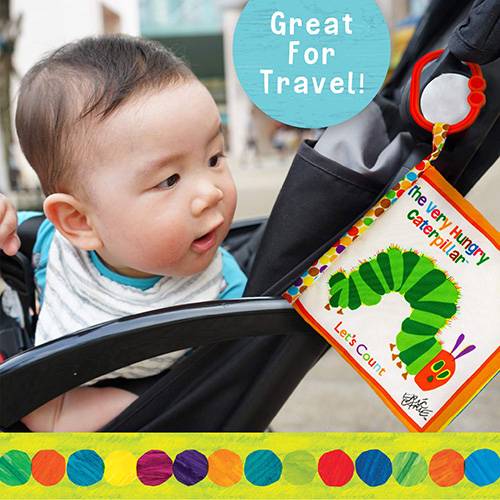
Vocabulary Exposure
Babies begin to hear and recognize words in the womb, so it only makes sense that you would want to continue strengthening that exposure after they are born. The simple use of words in context can help a child develop memory of its use later on.
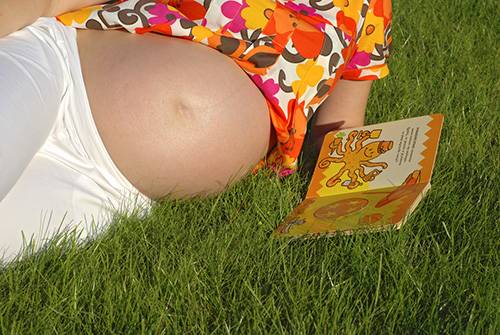
Sentence Structure Familiarity
Reading to a child not only exposes them to vocabulary, it also helps build fluency through exposure to sentence structure. How to use words correctly when speaking and writing is an important part of context recognition.
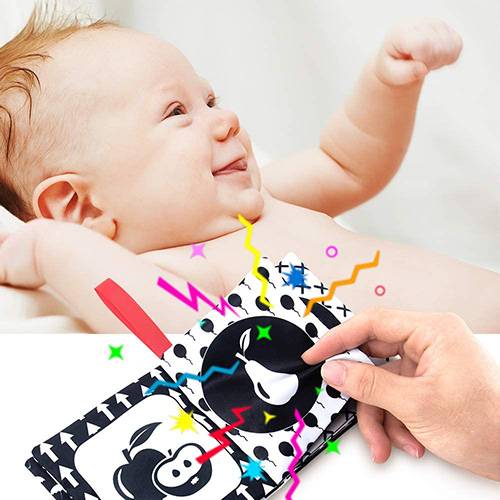
Language Use
Children learn from watching and mimicking adult behavior, and not only are you allowing them to see you with a book in your hand, enjoying reading- you also are allowing them to hear proper language use and pronunciation.
Emotional Building Blocks
Book content is excellent learning exposure as well, providing story lines that deal with day to day social and emotional growth and awareness. Sometimes children relate to characters that have similar experiences, and you can pick and choose from books that help support your child’s development regarding specific situations.
Educational Support
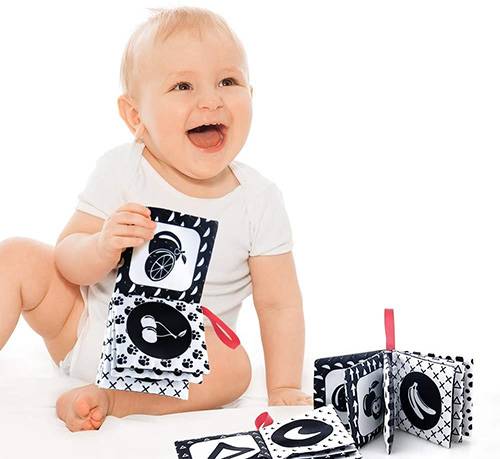
As with any skill, practice makes perfect, and regular reading through a baby’s development, into toddlerhood, and as they enter into their elementary years provides them a strong foundation for reading. Reading and comprehension is a skill that spans across all subject matters and will help your little ones be prepared to excel in school when the time comes.
Reading Stages of Development
As your child grows both mentally and physically, you want to instill in them the acknowledgment of the written language. Babies need different things at various stages of development, and you can more or less gauge what you feel they need by this handy list:
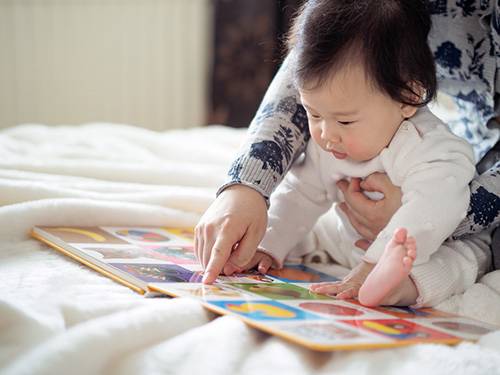
Birth to Six Months
Read anything and everything you want to a child at this age since they are not making a correlation between the words and a story. But you may want to provide them with their own book while you read. Give them soft fabrics, vinyl, and board books for them to feel, see, and chew on. This helps them develop gross motor skills while mimicking your reading movement.
Six to Nine Months
As your child notices the relationship between your words and a story, begin to offer simple stories or books that include words you can point out to them as you read. Look for colorful, bold illustrations to help them tie the story to the image.
Nine to 18 Months
Continue with simple stories, but also offer books that have rhyming schemes, child poems, or repeatable words and phrases. Books that also label things, or have interactive parts that allow you to ask simple questions of your child are also appropriate at this age.
18 to 24 Months
Longer stories, more complex plots, and humor are all options to introduce at this age. Children will also begin to retell simple stories based on the pictures, and become more independent in their own personal storytelling.
24 to 36 Months
If you haven’t already, introduce non-fiction books and continue books that label items for word recognition are great building blocks at this age. You may find your child able to read along with familiar stories and add their own story to various illustrations.
Our Top Baby Book Picks for Early Library Growth
There are MANY great books out there for you to choose from to grow a child’s library. So many, in fact, that narrowing down just a few top picks truly is impossible. The options we have provided below illustrate and highlight excellent examples of book types that are popular for various stages of development.
1. teytoy My First Soft Book
SPECS:
- Type of Book: Soft Cloth Sensory
- Age Group: Infant to 6+ months
- Subject Matter: 6 themes- shapes, fruit, bugs, vehicles, animals and letters
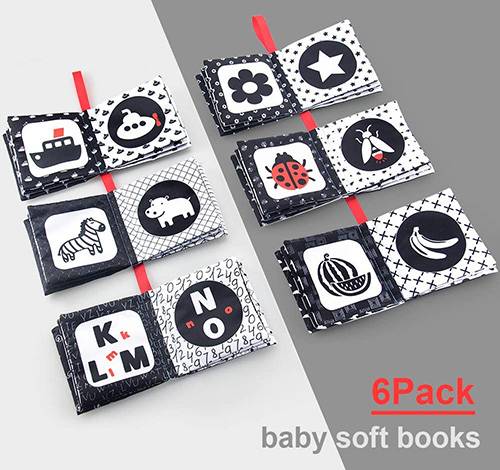
Best Sensory Book
Young babies benefit from bold contrasting colors and simple illustrations. These fabric cloth books are safe for babies to chew and touch, plus they have a crinkle texture that helps build on visual and physical senses. They are perfect for your child to hold onto while you read and for you to point out the names of the items as they get older. Each book has a durable, textured ribbon that is easy to spot for carrying and holding onto as well.
2. My First Library : Box Set of 10 Board Books
SPECS:
- Type of Book: Board Book Set
- Age Group: 3 months to 24 months
- Subject Matter: 10 themes- ABC, Numbers, Shapes, Colours, Wild Animals, Farm Animals & Pets, Birds, Fruits, Vegetables, Transport
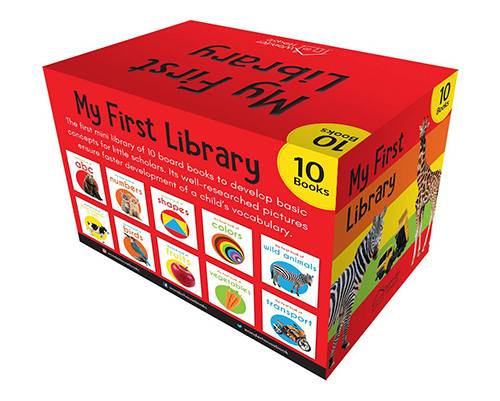
Best Set of Board Books
Board books are an excellent choice for babies who are able to turn pages. They offer a durable, tear free construction that is safe for babies to chew on as well. The bold colorations and contrast, along with simple illustrations offer word recognition introduction rather than a story line and help build word and reading independence. The set comes in a box so you can easily keep them all in one place to keep children coming back for more.
3. Who: Peek-a-Flap Board Book
SPECS:
- Type of Book: Board Book
- Age Group: 12 – 36 months
- Subject Matter: Forest Animals
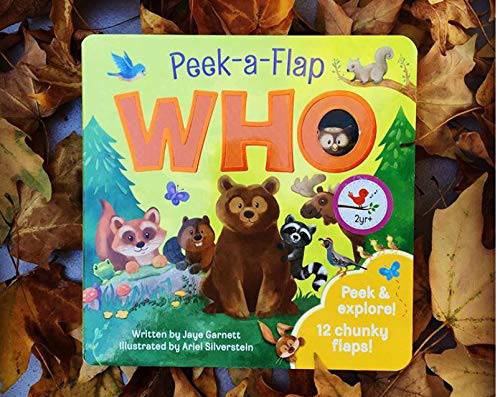
Best Lift-A-Flap Board Book
As your child develops motor skills, you want to introduce more cause and effect type examples, and these peek-a-flap board book series offer a fun story with a durable board page and flap for hours of use. Let your child visually explore while you introduce the story line to them. Let them learn about forest animals and where they live with this fun, interactive option.
4. Wild Animals: A Touch and Feel Book
SPECS:
- Type of Book: Sensory Board Book
- Age Group: 6 to 36 months
- Subject Matter: Wild Animal
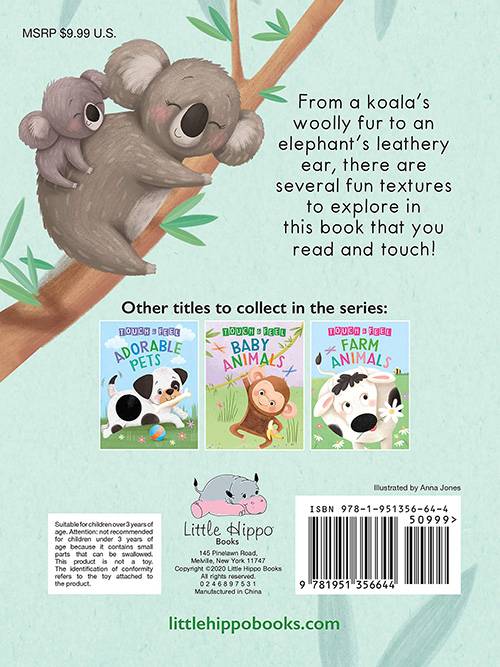
Best Touch and Feel Book
This series of books offers a sturdy board option with various textures found throughout the pages. Sensory learning is as much a part of a child’s development as their language acquisition, and when you can tie the two together you really are helping to build some awesome learning experiences. Let you child explore the pages and feel of each as you read to them about various subjects.
5. In My Heart: A Book of Feelings
SPECS:
- Type of Book: Book of Feelings
- Age Group: 2 to 5 years
- Subject Matter: Emotions
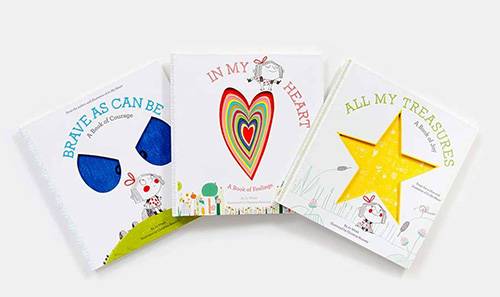
Best Baby Book About Emotions
Let your child explore various emotional responses with this unique hardcover book that provides an interactive heart cut-out that works its way through the pages of the book. Designed for toddlers and preschoolers, it allows children to view various ways people feel to help build both a sympathetic, and empathetic recognition.
6. World of Eric Carle The Very Hungry Caterpillar Baby Teething Crinkle Book
SPECS:
- Type of Book: Soft Cloth Sensory
- Age Group: Birth – 18 months
- Subject Matter: The Hungry Caterpillar
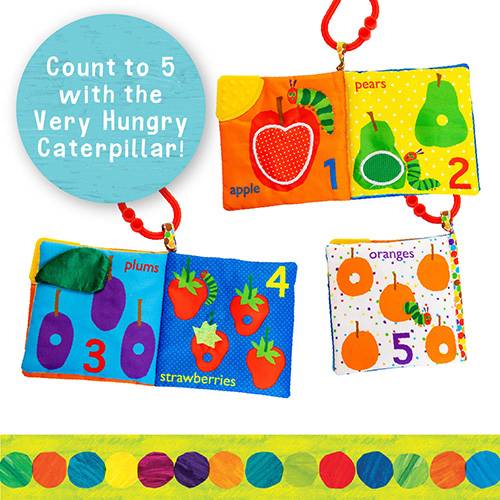
Best Introduction to Classic Children’s Stories
Eric Carle wrote and illustrated dozens of books over many decades, becoming one of the most beloved children’s authors of all times. His famous story of a Very Hungry Caterpillar is a staple in most households, and various versions have been introduced to a younger crowd to bring the love of the story to them long before they can read. This soft sided book has crinkle pages and is perfect for teething children, as well as those beginning to recognize the sense of feel and sound.
Conclusion
Although there are quite literally hundreds of books from which you can choose for any age group, these are some of the best types to consider for the development and growth of your child. Of course, you can always read to them from any book you deem appropriate as the cadence, enunciation , and word exposure builds so much for a child to build a strong language use upon.
Photo credit: fotografaw/Shutterstock; Mcimage/Shutterstock
